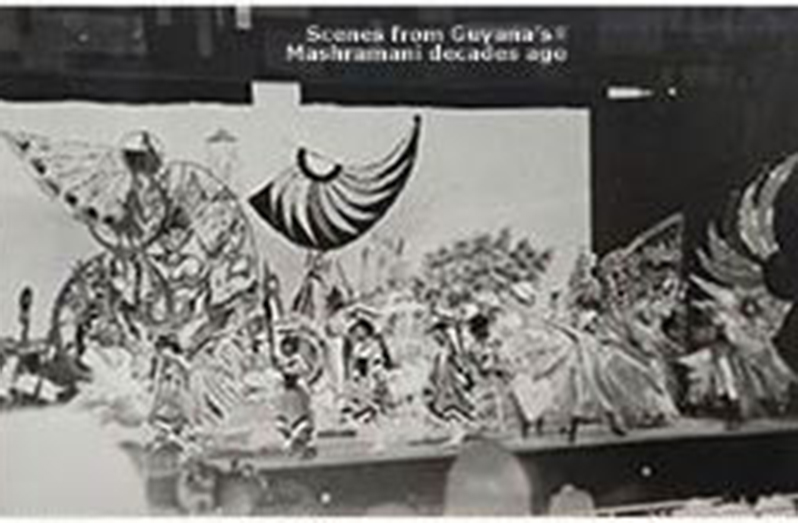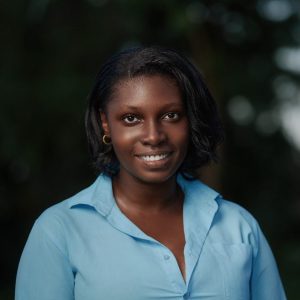A celebaration of Guyanese pride
MASH is a term coined by Guyanese. It is a celebration beyond a holiday or even a simple occasion. It is a grand display of patriotism that lives and blooms in the heart and spirit of every Guyanese. An atmosphere created by the intrinsic sounds of soca beats and a colourful assortment of costumes and people parade from Camp Street to the National Park.
Mashramani is held close to the hearts of our people because of its undoubtedly authentic Guyanese nature. The very word is said to be derived from an indigenous term meaning “celebration after hard work.” Regardless of its origins and where the word came from, Mashramani has, from its very beginning, been Guyanese. From its early days in 1970, Mashramani, like the Guyanese spirit, has survived countless challenges as the country has. The mass celebration has withstood the tests of the coronavirus, and this year, we will celebrate our nation’s independence in what is slated to be the biggest Mashramani celebration the country has ever seen.

Mashramani’s birth
There is not a single Guyanese child anywhere today who does not know the meaning of Mashramani. But there is more to the story than meets the eye. Celebrated on February 23, Mashramani marks the nation’s national sovereignty and a clear and definite display of our individuality after colonialism.
For a little country in South America, Guyana’s first Mashramani had to be explosive. Every country has their rendition of independence, and some are far more like our own than you would imagine. Our Caribbean counterpart, Trinidad, has a carnival, which has had locals and tourists celebrate together for years, and Barbados celebrates its enigmatic Crop Over. The United Kingdom, although drastically different culturally, has Notting Hill Carnival, which is said to be the country’s biggest party. Caribbean essence is impossible to hide, put aside, or suffocate, and Canada’s Caribana tells us a way for the country’s Caribbean population to showcase and celebrate their rich roots while strengthening their sense of self.
To an outsider looking in, Mashramani would show a proud country unapologetically celebrating in grand fashion. Although we knew the meaning of the word that gave rise to the colourful costumes, melodic Caribbean music, and countless celebrating families, there is a story to the unique word Mashramani. In 1970, the first-ever Mashramani took place, and the country fell in love with showcasing who they are. The idea behind Mashramani is said to have been birthed some years prior, in 1966. A then small social group, the JAYCEES of Linden, took hold of the idea and began organising a carnival for independence on May 23. It was not until our country gained independence that the plan for the celebration blossomed, and the first stepping stones of today’s Mashramani were set.
According to a few historical sources, three ambitious Guyanese visionaries began culminating the very first ever Mash: Wordsworth McAndrew, national folklorist; Dr. Arthur J. Seymour, acclaimed poet; and Adrian Thompson, one of Guyana’s earliest mountaineers. History has it that the newly formed committee began planning all that the celebration would encompass. However, the term ‘carnival’ was soon to be replaced with something unique that would tell of independence and Guyanese nationhood.

Although history does not state the committee’s motive or inspiration, an indigenous word was sought out. Allan Fiedtkou, an Amerindian man who we would later learn was instrumental in the development of Mashramani, was consulted on rebranding the nation’s independence. Fiedtkou told the committee about a celebration his people had. The occasion Fiedtkou told of was called ‘Muster Many’ or Meshirimehi in the Amerindian tongue. But the word sounds like Mashramani in Arawak. Perhaps it was the captivating nature of its meaning or the fact that the word felt truly traditional, but Mashramani, meaning “celebrations after work” by all definitions, was officially coined as the term for the country’s independence celebrations.
The evolution of the celebration
Every son and daughter of our soil has memories of Mashramani. But those memories have changed throughout the years. Anyone over the age of 40 may describe a celebration that has subtle differences from the Mashramani we know today. The first-ever Mashramani lasted a staggering three full days of celebration. The occasion has evolved to become an awaited day; as January comes to an end, Mashramani preparations begin. Although still prominent today, celebratory aspects such as the costume competition were a focal point of the festivities. The calypso competition was also among the most anticipated. People would crowd to hear these social commentators talk about everything from the economy to social justice. The true roots of Mashramani took place in the most simplistic of Guyanese creativity and arts.
But in a country where everyone is a brother, sister, cousin, or aunt, COVID-19 changed the way we celebrated Mashramani. Unable to traverse Georgetown’s once-packed streets, Guyanese were utterly unfamiliar with the idea of social distancing. As a wildly welcoming and close-knit people, it is not in our nature to celebrate alone; the lockdown stopped many of our nation’s occasions, Mashramani included.

But our spirit was not locked down like the rest of the world, and as Mashramani slowly began to re-emerge, the bigger it got. Today, Mashramani is an explosive, truly national celebration that draws people from all around the world. Mashramani is something beautiful; whether you watch it live on Facebook or venture out into the streets alongside your family and friends, everyone is a part of Mashramani. The word, its origin, and how began it are left to history, and how the tradition will evolve is impossible to see. But one thing is sure: as long as we can, Guyanese will ‘Mash’ as hard as they can. So, wherever you are, as long as you are Guyanese, celebrate your nation proudly with this Mashramani and a happy Mashramani 2024.



.jpg)








